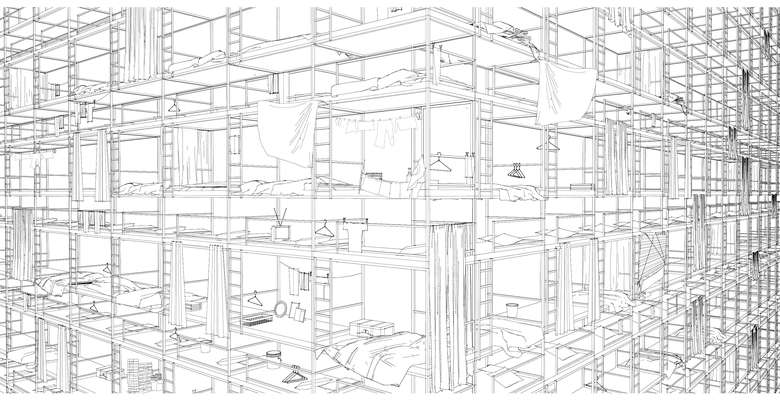Idea by
Elif Çiğdem Artan, Eray Çaylı, Hayrettin Günç, Yelta Köm
Call for ideas 2017
Inhabiting Precarity
Inhabiting Precarity

Precarity was once seen as a temporary transition between one mode of security and another. But fixed-term contracts, political instability, legal ambiguity and gentrification have become so ubiquitous today as to render precarity a permanent condition for ever-increasing populations. This project focuses on these populations, and asks what sorts of spatial practices can emerge out of their experience. It explores this question under the following four social fields that have each seen precarity’s becoming a ubiquitous condition: work (e.g., seasonal/migrant workers, call center employees), activism (e.g., squatters, Occupy protesters), law (e.g., asylum seekers, women’s shelter residents), and urbanism (victims of profit-led urban renewal). The age of precarity demands that architects stop offering “solutions” to individuals who experience precarity as such, and start documenting as legitimate works of architecture these individuals’ own material-spatial responses to this experience.
Inhabiting Precarity
Inhabiting Precarity

Precarity was once seen as a temporary transition between one mode of security and another. But fixed-term contracts, political instability, legal ambiguity and gentrification have become so ubiquitous today as to render precarity a permanent condition for ever-increasing populations. This project focuses on these populations, and asks what sorts of spatial practices can emerge out of their experience. It explores this question under the following four social fields that have each seen precarity’s becoming a ubiquitous condition: work (e.g., seasonal/migrant workers, call center employees), activism (e.g., squatters, Occupy protesters), law (e.g., asylum seekers, women’s shelter residents), and urbanism (victims of profit-led urban renewal). The age of precarity demands that architects stop offering “solutions” to individuals who experience precarity as such, and start documenting as legitimate works of architecture these individuals’ own material-spatial responses to this experience.